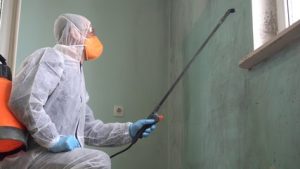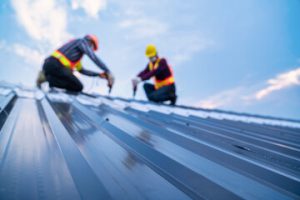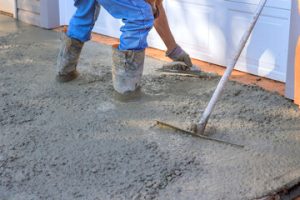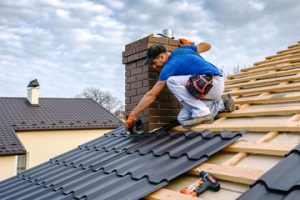Your siding shields your home from the elements, insulating it against winter cold and summer heat. Damaged or faulty siding can lead to increased energy bills, mold, mildew growth, and other costly complications.
Obvious indicators like warping or rotting panels require immediate attention, while more subtle cues, such as discoloration, are signs that the time for repairs has come. Finding the right Siding contractor ensures your siding repairs are efficient and effective, safeguarding your home’s durability and curb appeal.
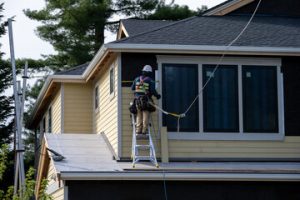
Inspecting Your Siding
If you’re a homeowner, it’s important to make siding inspections a regular part of your home maintenance. This will help to prevent early damage from escalating into costly repairs or even structural issues in the future. In addition, it will keep your home looking fresh and beautiful throughout the year.
During a siding inspection, be sure to examine all areas of your exterior. Look for cracks, warping, mold growth, and other signs of wear that can cause further problems. A good way to determine the condition of your siding is by using a moisture meter, which can detect water damage that may not be visible. Also, be sure to check for caulking and sealant that may need to be replaced.
Other things to look for include paint chips, rust stains, and discolorations. Any of these problems can indicate underlying issues that are getting worse, such as water infiltration or wood rot.
If you notice major damage, it’s best to bring in a professional to assess the situation and make the appropriate recommendations for repair or replacement. A siding expert will be able to identify and fix any underlying issues before they become worse. In addition, they can recommend the proper repair methods that will work for your particular type of siding material. Whether you have cement siding, aluminum, or vinyl siding, a professional will be able to recommend the best solution for your home.
Assessing the Damage
Whether your siding is damaged from hail or simply aging, it is important to assess the damage before you hire someone to repair or replace it. You can start by walking around the outside of your home and looking for obvious signs of damage, such as dents in vinyl siding or holes in wood. It is also helpful to get a professional assessment from a reputable contractor that specializes in siding repair and replacement. This will ensure that the damage is evaluated thoroughly and repaired correctly.
During the initial consultation, pay attention to how well the contractors communicate with you and how knowledgeable they are about siding materials. This can give you an idea of their experience, preferred practices, and general approach to project management. Also, pay attention to their availability and how quickly they respond to your questions. If they aren’t available or unable to answer your questions, that is a red flag, and you should continue your search for a different contractor.
It is important to find out whether the contractors are insured and licensed to work in your area. This will protect you against any legal issues or contractors who may not complete the job properly. In addition, it will help you ensure that they are familiar with local building codes and knowledgeable about the weather challenges specific to your area.
Choosing the Right Repair Method
When performing siding repair, choosing the right methods and materials is vital to ensure the work withstands the rigors of summer. Avoid mixing materials that may not match in color or texture, as this can lead to alignment problems and further damage. Also, choose materials that are compatible with your home’s structure and climate.
For example, wood fillers made of a material that is compatible with the existing surface are suitable for filling in small cracks and chips. However, these products can be messy to apply and must be sanded down once dry to maintain a smooth finish. For more severe damage, a replacement piece of siding can be installed to restore the overall look and functionality of your home.
If you notice warping or buckling in your siding, it’s important to address this issue promptly, as this can weaken the structural integrity of your home and allow moisture intrusion. To prevent further damage, you should use a siding removal tool to remove the affected panel and replace it according to the manufacturer’s instructions. If the panel is not severely distorted, you can also soften the vinyl using light heat to reshape it and preserve a consistent appearance.
For more extensive damage, consider hiring a professional siding service that offers advanced repair and painting techniques and a warranty on their work. This will ensure the integrity of your siding and the long-term protection of your home from the elements.
Choosing the Right Materials
In the end, the type of siding you choose will have a big impact on its durability, longevity, and aesthetics. A high-quality installation of a well-matched material can help to reduce maintenance costs, avoid moisture damage, pests, and other issues, and increase your home’s resale value.
Wood siding is popular among homeowners seeking a classic yet durable look. Cedar, redwood, and pine are all suitable choices for this material. It’s easy to keep in good condition with regular inspections and restraining treatments. The natural beauty of wood can be accentuated with stains and paints to suit any taste.
Clapboard siding, which features horizontal boards that overlap, is another common choice. It’s also weather-resistant and can hold up to harsh winter storms. Vinyl siding and fiber cement board imitations of this style have become popular as a more affordable alternative to traditional wood siding.
Stucco is a durable and low-maintenance option for many warmer climates. It’s made from a mixture of cement, sand, lime, and water and applied in layers. It’s highly customizable with different tints and can be finished in a range of finishes from a textured sand finish to a smooth, painted look. Stucco is insect and fire-resistant, and prevents termite damage.
Metal siding isn’t as common on homes as it once was, but it can still be a durable option for many. It’s resistant to bugs and fire, and reflects sunlight rather than absorbs it, which makes it energy efficient. However, it’s not soundproof and can be prone to rust in humid or coastal climates.
